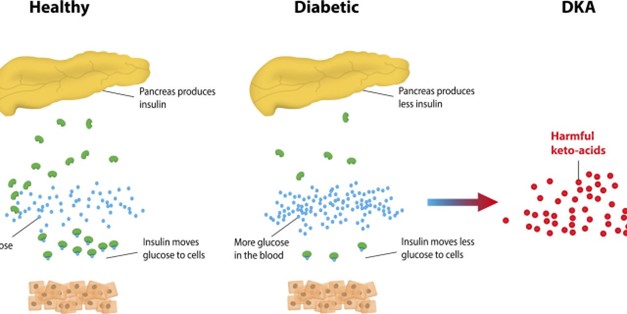A nurse is preparing a client who has advanced cirrhosis for an abdominal paracentesis. Which of the following actions should the nurse take?
Place the client on his back.
Have the client increase fluid intake after the procedure.
Assure the client that the procedure is painless.
Instruct the client to empty his bladder.
The Correct Answer is D
Choice A: Place the client on his back. This is incorrect because the client should be placed in a sitting position with the head of the bed elevated to 30 to 45 degrees. This allows the fluid to accumulate in the lower abdomen and reduces the risk of puncturing the diaphragm.
Choice B: Have the client increase fluid intake after the procedure. This is also incorrect because the client should restrict fluid intake after the procedure to prevent fluid overload and electrolyte imbalance. The nurse should monitor the client’s intake and output, weight, and vital signs.
Choice C: Assure the client that the procedure is painless. This is not true because the client may experience some discomfort or pressure during the insertion of the needle or catheter. The nurse should administer analgesics as prescribed and provide emotional support.
Choice D: Instruct the client to empty his bladder. This is correct because this reduces the risk of bladder injury during the procedure. The nurse should also measure and record the amount of urine voided.
Nursing Test Bank
Naxlex Comprehensive Predictor Exams
Related Questions
Correct Answer is A
Explanation
Choice A reason: A fruity odor in the breath is a symptom of hyperglycemia, especially when it is severe and causes ketoacidosis. Ketoacidosis is a condition where the body produces ketones, which are acidic substances that result from the breakdown of fat for energy when there is not enough insulin or glucose available. Ketones can make the breath smell fruity or like nail polish remover.
Choice B reason: A decreased appetite is not a symptom of hyperglycemia. On the contrary, an increased appetite or hunger is a symptom of hyperglycemia, as the body tries to compensate for the lack of glucose in the cells by stimulating the hunger center in the brain.
Choice C reason: An increased thirst is a symptom of hyperglycemia, as the body tries to flush out the excess glucose and ketones in the blood through urine. This leads to dehydration and thirst signals in the brain.
Choice D reason: A blurry vision at times is a symptom of hyperglycemia, as high blood glucose levels can cause swelling and damage to the lens of the eye, affecting its ability to focus light properly. This can lead to temporary or permanent vision problems.

Correct Answer is D
Explanation
Choice A reason: Insulin injected into the thigh is not the most rapidly absorbed. The abdomen is the preferred site for insulin injection, as it has the fastest and most consistent absorption rate. The thigh, arm, and butock have slower and more variable absorption rates12.
Choice B reason: The botle of insulin should not be shaken before withdrawing the medication. Shaking can damage the insulin molecules and affect their potency and effectiveness. Instead, the botle should be gently rolled between the palms to mix the insulin evenly13.
Choice C reason: Lantus insulin should not be used immediately before each meal. Lantus is a long-acting insulin that provides a steady basal level of insulin for 24 hours. It should be taken once a day at the same time every day, regardless of meals. Humalog is a rapid-acting insulin that can be used immediately before each meal to cover the postprandial glucose spikes14.
Choice D reason: Unopened vials of insulin should be kept in the refrigerator until needed. This can help preserve their quality and potency until their expiration date. Opened vials of insulin can be kept at room temperature for up to 28 days, depending on the type and brand
Whether you are a student looking to ace your exams or a practicing nurse seeking to enhance your expertise , our nursing education contents will empower you with the confidence and competence to make a difference in the lives of patients and become a respected leader in the healthcare field.
Visit Naxlex, invest in your future and unlock endless possibilities with our unparalleled nursing education contents today
Report Wrong Answer on the Current Question
Do you disagree with the answer? If yes, what is your expected answer? Explain.
Kindly be descriptive with the issue you are facing.
